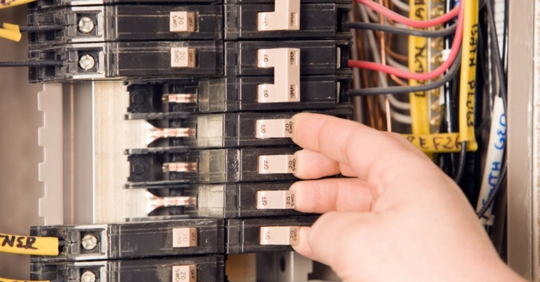Electricity powers nearly everything in our homes—from the lights above our heads to the appliances we use every day. But when problems arise, even small electrical issues can be frustrating and potentially dangerous. Knowing how to recognize, diagnose, and address these problems safely can save you time, money, and stress. Below are practical steps and safety tips to help homeowners identify and troubleshoot common electrical issues before they escalate into bigger concerns.
Recognizing Electrical Symptoms
Homeowners should be well-versed in recognizing telltale electrical symptoms that might indicate underlying issues. One of the most common signs is flickering lights, which can be caused by anything from incompatible bulbs to faulty wiring. While the occasional flicker may not be a cause for panic, consistent ebbing might hint at a deeper issue requiring attention.
Other warning signs include:
- Frequently blown fuses or tripped circuit breakers – may signal an overloaded circuit or serious electrical faults.
- Unusual buzzing sounds – often point to faulty wiring and can be a fire hazard.
- Burning odors – especially those that smell like melting plastic, require immediate attention.
If you notice any of these symptoms, it’s best to proceed cautiously and address them before they compromise your home’s safety.
Spotting Power Outages and Dips
Being able to differentiate between localized power problems and broader outages is a valuable skill for homeowners. Sometimes, an appliance might stop working due to an internal issue rather than a widespread power cut. A quick check with neighbors can help ascertain if the outage is isolated or widespread.
Temporary power dips, or “brownouts,” can also cause confusion. These occur when there’s a minor drop in power supply. Although they might seem like minor inconveniences, they can strain appliances over time. Common culprits include:
- Overloading circuits with too many devices
- Faulty wiring
- External issues with the local electrical grid
Awareness and quick identification of these problems can save your home appliances from unnecessary wear and tear.
Essential Safety Gear and Tools
When dealing with home electrical repairs, safety should always come first. Equip yourself with proper gear and tools before attempting any troubleshooting.
Recommended safety equipment includes:
- Insulated gloves and protective goggles
- Rubber-soled shoes for shock protection
- Insulated tools to prevent current transfer
- A voltage tester and multimeter to identify live wires and measure voltage safely
A small investment in these tools can go a long way toward ensuring safety and efficiency during electrical repairs.
Turning Off Power Safely
Before inspecting or repairing anything, make sure your power is completely turned off.
- Locate your home’s breaker box and find the main power switch.
- Turn it off to cut power to the entire house.
- Use a voltage tester to double-check that the circuit you’re working on isn’t live.
Taking these extra few minutes helps guarantee a safe working environment and provides peace of mind while troubleshooting.
Testing the Outlet and Wiring
Testing outlets and wiring is fundamental when diagnosing electrical issues. Using a multimeter, you can measure voltage, current, and resistance to assess a circuit’s health.
Steps for safe testing:
- Insert probes into the outlet slots to confirm voltage.
- Inspect wiring for fraying, discoloration, or damage.
- Replace any damaged sections immediately.
Always approach wiring carefully, and if something seems off, stop and reassess before continuing.
Examining Circuit Breakers and Fuses
Your home’s circuit breaker panel manages electrical flow throughout your system. When facing power issues:
- Look for tripped breakers (switches in the neutral or “off” position) and reset them.
- For fuses, check for discoloration or a broken filament—both signs that a replacement is needed.
Persistent issues could indicate failing breakers that need professional replacement. Handle all components carefully, ensuring your hands are dry and insulated tools are in use.
Dealing with Light Fixture and Switch Problems
Flickering lights or malfunctioning switches are common frustrations. To troubleshoot safely:
- Turn off the power before handling any fixtures.
- Tighten or replace bulbs.
- Use bulbs with the correct wattage to avoid overheating.
- Check dimmer switches—some may be incompatible with LED bulbs.
If tightening or swapping bulbs doesn’t fix the issue, the problem could lie deeper in the wiring and may require professional attention.
Managing Overloaded Circuits
Overloaded circuits happen when too many devices draw power from the same source. This often leads to tripped breakers or blown fuses.
To prevent overloads:
- Identify which outlets and devices are affected when a breaker trips.
- Spread devices across multiple circuits.
- Use surge-protected power strips—but don’t rely on them as a long-term fix.
- Consider installing new circuits to handle your home’s power needs.
Balancing your electrical load keeps your system healthy and prevents future disruptions.
Identifying Situations Requiring Expert Intervention
Some electrical issues are beyond the scope of DIY repairs. It’s time to call a professional if you notice:
- Frequent outages or sparks
- Persistent buzzing or burning smells
- Even mild electrical shocks
These are signs of potentially serious problems that require a licensed electrician. Ignoring them could lead to fire hazards or severe system damage.
Choosing a Qualified Electrician
When it’s time to call in the experts, choosing a qualified electrician is crucial. Look for professionals who are:
- Licensed and insured
- Well-reviewed or recommended by trusted sources
- Transparent with pricing and communication
Avoid unusually low quotes, as they can signal subpar workmanship. Building a relationship with a trusted electrician ensures reliable service and proactive maintenance.
You Can Trust Our Experts at Small Jobs Electric®
For homeowners in Tampa, FL and surrounding areas, Small Jobs Electric® offers exemplary services to cater to your electrical needs. From routine check-ups to critical repairs, our expertise promises both safety and satisfaction. Don’t hesitate to reach out and secure the professional support your home deserves.
Call Small Jobs Electric® now at (813) 303-0052 or send us a message online.

